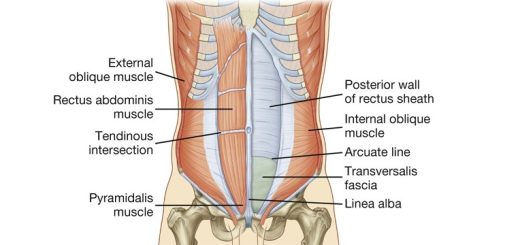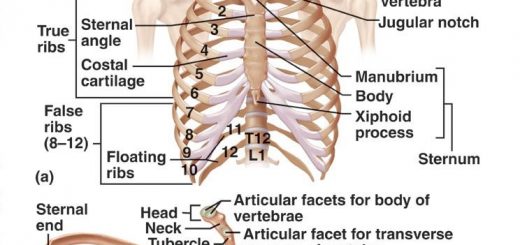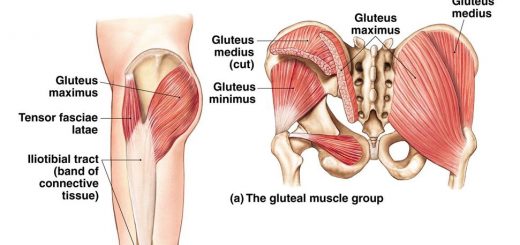Cardiovascular system, Blood pressure regulation, Heart rate and its regulation
Cardiovascular regulatory mechanisms increase the blood supply to active tissues, they help increase or decrease the heat loss from the body by redistributing the blood in humans and other mammals, they can maintain the blood flow to the heart and brain when the body suffers from hemorrhage, When the hemorrhage faced is severe, flow to these vital organs is maintained at the expense of the circulation to the rest of the body.
Cardiovascular regulatory mechanisms
Multiple cardiovascular regulatory mechanisms are evolved to maintain the body homeostasis.
Nerve supply to the heart
The SA node is usually under the influence of both divisions of the autonomic nervous system The sympathetic system enhances automaticity, whereas the parasympathetic system inhibits it. Ordinarily, the vagal tone predominates in healthy resting individuals.
Vagal tone: Parasympathetic influence exceeds the sympathetic effect on the SAN at rest; this is mediated mainly by effective inhibition of the release of the norepi-nephrine from the sympathetic nerve ending by the acetylcholine released from neighboring vagus nerve endings.
Vagal stimulation to the heart decreases all cardiac properties. Sympathetic stimulation to the heart increases heart rate (positive chronotropic effect), the force of contraction (positive inotropic effect), and conduction rate over the AV node (positive dromotropic effect).
Innervation of the blood vessel
Although the arterioles are most densely innervated, all blood vessels except capillaries and venules contain smooth muscle and receive motor nerve fibers from the sympathetic nervous system.
a. Sympathetic noradrenergic control:
- The fibers to the arterioles (resistance vessels) regulate tissue blood flow and arterial pressure. The fibers to the venous capacitance vessels control the volume of blood ”stored” in the veins and venous return.
- Arterioles are under resting sympathetic tone. Continuos resting discharge from the vasomotor area to the blood vessels is called ”vasomotor tone” that is responsible for normal blood pressure.
- Most sympathetic fibers release noradrenaline that acts on C-receptors on the smooth muscle producing contraction.
b. Cholinergic neuronal control:
- Cholinergic sympathetic nerves release acetylcholine, which indirectly dilates vascular smooth muscle.
- Cholinergic sympathetic innervate blood vessels of the skeletal muscle.
- Parasympathetic nerves do innervate erectile tissue and salivary glands producing vasodilatation.
Medullary control of the cardiovascular system (Medullary cardiovascular centers)
One of the major sources of excitatory input to the sympathetic nerves controlling the cardiovascular system is a group of neurons located in the rostral ventrolateral medulla (RVLM). This region is called the vasomotor area. The Nucleus of tractus solitarius (NTS) is also a major site of origin of excitatory input to cardiac preganglionic parasympathetic neurons in the nucleus ambiguous.
The medullary cardiovascular centers receive inputs from:
1. Afferent impulses from receptors located within the cardiovascular system
- Arterial Baroreceptors
- Atrial stretch receptors
- Peripheral chemoreceptors
Arterial Baroreceptors
Acute changes in the arterial blood pressure reflexly elicit inverse changes in the heart rate and the vascular diameter via the baroreceptors, They are located in the aortic arch & the carotid sinuses, They respond to changes in the mean arterial blood pressure within a range varying between 60 & 160 mm Hg.
The baroreceptors are more sensitive to pulsatile pressure than to constant pressure, At normal blood pressure levels (about 100 mm Hg mean pressure), a burst of action potentials is transmitted from the baroreceptor to stimulate the cardiac vagal neurons that decrease heart rate (vagal tone), At lower mean pressures, the firing is reduced while at higher pressures, the firing is increased.
Afferents from the baroreceptors are called ”buffer nerves” (”aortic depressor nerve” a branch of the vagus nerve from the aortic arch and ”carotid sinus nerve” a branch of the glossopharyngeal nerve from the carotid sinus), They make connections to the medullary cardiovascular areas, and the efferent pathways from these areas constitute a reflex feedback mechanism that operates to stabilize blood pressure and heart rate.
Any drop in the systemic arterial pressure decreases the discharge in the buffer nerves leading to a compensatory rise in blood pressure and cardiac output. In opposite, any rise in pressure produces dilation of the arterioles and decreases cardiac output until the blood pressure returns to its previous baseline level.
The activation of arterial baroreceptors inhibits the secretion of Anti Diuretic Hormone (ADH), Baroreceptors are very important in the short-term control of arterial pressure, Activation of the reflex allows for rapid adjustments in blood pressure in response to the abrupt changes in the posture, blood volume, cardiac output, or peripheral resistance, The baroreceptors are more sensitive to pulsatile pressure than to constant pressure.
Baroreceptor resetting
In chronic hypertension, the baroreceptor reflex mechanism is reset to maintain an elevated rather than the normal blood pressure.
Cardiopulmonary mechanoreceptors (Baroreceptors) (Atrial stretch receptors)
The mechanoreceptors embedded in the walls of the heart (all chambers), great veins where they empty into the right atrium, and the pulmonary artery, There are two types of the atrial receptors:
- Type A: discharges primarily during atrial systole.
- Type B: discharges during atrial diastole at the time of peak atrial filling.
Their rate of discharge increases when there is an increase in the blood volume or the venous return. These receptors are called low-pressure receptors. They are pressure as well as volume controllers.
- Distention of atrial stretch receptors type B by volume stimulates the vagi (afferent nerve). The efferent impulses are carried to the SA node. The cardiac response is highly selective; it increases the heart rate with a negligible effect on ventricular contractility. Furthermore, the increase in the sympathetic activity is restricted to the heart rate; there is no increase in the sympathetic activity to the peripheral arterioles.
- The stimulation of the atrial receptors also increases the urine volume, partially due to reduced activity in the renal sympathetic nerve fibers, However, the principal mechanism appears to a neurally mediated reduction in the secretion of vasopressin (the antidiuretic hormone) by the posterior pituitary gland.
- Stretch of the atrial receptors also causes atrial natriuretic peptide (ANP) to be released from storage granules within atrial myocytes. ANP has potent diuretic and natriuretic effects on the kidneys. Also, it dilates the resistance and capacitance of blood vessels, Thus, ANP is an important regulator of blood volume and blood pressure.
Peripheral chemoreceptor reflex
- The peripheral arterial chemoreceptors in the carotid and the aortic bodies have very high rates of blood flow, These receptors are primarily activated by the reduction in the partial pressure of oxygen (PaO2), but they also respond to an increase in the partial pressure of carbon dioxide (PaCO2) and a decrease in the pH.
- Chemoreceptors exert their main effect on respiration; however, their activation also leads to vasoconstriction.
- The heart rate changes are variable and depend on various factors, including changes in respiration, The direct effect of the chemoreceptor activation is to increase the vagal nerve activity, However, hypoxia also causes stress and increased catecholamine secretion from the adrenal medulla, both of which produce the tachycardia and an increase in cardiac output, These compensate for the bradycardia induced by the peripheral chemoreceptor stimulation.
- The hemorrhage that produces the hypotension leads to the chemoreceptor stimulation due to decreased blood flow to the chemoreceptors and consequent stagnant anoxia of these organs.
2. Afferent impulses from receptors within the body but outside the cardiovascular system
a. Reflex response to pain
The pain usually causes a rise in blood pressure and tachycardia via afferent impulses in the reticular formation converging in the RVLM. However, prolonged severe pain may cause vasodilation, bradycardia, and fainting.
b. Reflexes from receptors in exercising skeletal muscle
The reflex tachycardia and increased arterial pressure can be elicited by the stimulation of certain afferent fibers from the skeletal muscle, These pathways may be activated via a pathway to the RVLM.
3. Afferent impulses from higher centers
a. The cerebral cortex, limbic system, and hypothalamus
The vasomotor area is regulated by the descending tracts from the cerebral cortex (particularly the limbic cortex) that relay in the hypothalamus, These fibers are responsible for the blood pressure rise and tachycardia produced by the emotions such as stress and anger, The connections between the hypothalamus and the vasomotor area are reciprocal, with the afferents from the brain stem closing the loop.
b. Respiratory centers
The heart rate increases during the inspiration and decreases during the expiration, This is called “Respiratory sinus arrhythmia”, This is because:
- During inspiration, medullary respiratory centers influence cardiac autonomic centers and increase the heart rate.
- Vagal inhibition by lung inflation.
- Increased venous return during inspiration causes stimulation of the atrial stretch receptors. This leads to increased heart rate.
c. Cushing reflex
When the intracranial pressure is increased, the blood supply to RVLM neurons is compromised, and the local hypoxia and hypercapnia increase their discharge. This results in rising in the systemic arterial pressure (Cushing reflex) that tends to restore.
Flow to the medulla, Over a considerable range, the blood pressure rise is proportional to the increase in the intracranial pressure, However, the rise in the blood pressure causes a reflex decrease in the heart rate via the arterial baroreceptors, This is why the bradycardia rather than tachycardia is characteristically seen in patients with increased intracranial pressure.
d. CNS ischemic response
In cases of severe reduction of arterial BP, brain ischemia occurs. The resulting low blood flow causes buildup of carbon dioxide in the vasomotor centers (RVLM), resulting in generalized vasoconstriction. This elevates the arterial BP and maintains the blood flow.
CNS ischemic response does not become very active until the arterial BP falls far below normal (60 mm Hg or less). It reaches maximum stimulation at pressure 15-20 mm Hg, This response is an emergency control system that acts rapidly and powerfully to prevent further decline in the arterial pressure when blood flow to the brain decreases dangerously; it is sometimes called the “last-ditch stand” mechanism for blood pressure control.
Heart rate and its regulation
In adult males the normal heart rate is about 75 per minute, the range is from 60-100 per minute. In adult females, the heart rate is slightly higher than in males of similar age; this may be due to lower vagal tone as a result of lower blood pressure in females.
A heart rate higher than 100 beats/min is called “tachycardia” and a rate lower than 60 beats/min is called “bradycardia”. Apart from sex, heart rate may vary according to:
- Age: Roughly, heart rate inversely proportional to age. In the fetus: 140-150 beats/min., in the newborn: 130-140 beats/min., from 1-3 years: 95-115 beats/min., over 15 years: 70-80 beats/min.
- Metabolic rate: the heart rate is directly proportional to the metabolic rate.
- Respiration: Heart rate and respiration run parallel. Under normal conditions, stimulation or depression of one will always cause parallel changes in the other. e.g. during exercise and emotional excitement.
- Time of the day: There is a circadian rhythm (24-hr. rhythm) of the heart rate. It is lowest in the early morning (65 beats/min.) and highest in the evening (85) beats/min).
- Rest and sleep: under basal conditions with complete physical and mental rest, or during quiet sleep, the heart rate slows down to 60 beats/min.
- Physical training: Athletes have a lower heart rate (50-60 beats/min.) than non-athletes at rest due to high vagal tone.
- Posture: The heart rate increases during standing by up to 25% of its basal value. It returns back to the normal basal value in the recumbent position.
Regulation of Heart Rate
Since the heart rate is regulated by variations in the vagus tone and sympathetic discharge.
Heart rate is accelerated by:
- Decreased activity in the baroreceptors
- Increased activity of the atrial stretch receptors.
- Inspiration
- Excitement and Anger
- Most painful stimuli.
- Moderate Hypoxia (directly stimulates the RVLM or the cardiac tissue)
- Exercise
- Epinephrine.
- Thyroxin (increases the beta receptor sensitivity to the circulating catecholamine).
- Fever (Increased body temperature 1°C increases the heart rate 10 beats/min. The increased heart rate by the increased body temperature is due to accelerated ionic exchange in the prepotential of the slow action potential).
Heart rate is slowed by:
- Increases the activity of baroreceptors Expiration.
- Severe fear & grief.
- Stimulation of pain fibers in triggered areas.
- Increased intracranial pressure.
- Severe hypoxia & acidosis.
- Hyperkalemia.
- Acetylcholine
Factors affecting cardiac output, Stroke volume, Heart rate & blood pressure
Cardiac cycle importance, phases, diastole & systole, Aortic pulse curve & jugular venous
Electrocardiogram (ECG) importance, ECG test results, analysis & abnormalities
Heart & Pericardium structure, Abnormalities & Development of the heart













